Definition and Importance of Diversity Consciousness
Diversity consciousness refers to being aware and respecting the differences that exist among people of varying backgrounds. It is not limited only to race, skin, color, gender, social class, sexuality, age, mental capability or intellect.
Diversity at the workplace is viewed by most organizations as an important tool for dealing with the ever increasing competition and is essential for promoting creativity as well as productivity. It is no longer a new idea but rather a well known concept in the corporate world (Thiederman, 2008).
Diversity consciousness helps to bring together ideas from different cultures across the world as well as new attitudes and perspectives that can make an organization to be more competitive (Gröschl, 2011). It also makes people open to new ideas and willing to learn. Diversity consciousness also helps to create a less biased work environment where employees are treated equally.
According to Shakhray (2009), diversity at the workplace makes it possible for an organization to leverage the strengths of different individuals for the benefit of the organization.
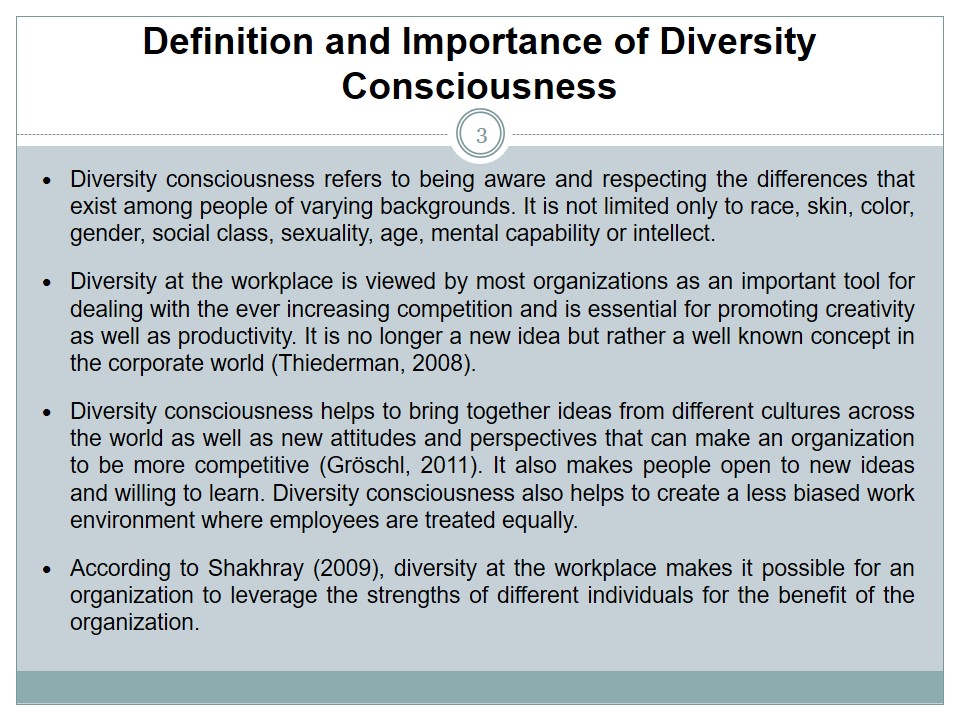
Barriers to Success
A barrier may be defined as an obstacle or impediment that hinders progression.
Despite the fact that diversity has widely been accepted, a number of barriers exist that may hinder its development.
One of the greatest hindrances is Language. Without a common language that is acceptable and understood by all, communication becomes a challenge and getting people to work in a team setup can be a real headache for managers.
Resistance to change from dominant groups within an organization also acts as a barrier and interferes with success that accompanies effective application of the concept of diversity at the workplace. Naturally, human beings are afraid of accepting something that will affect their lives in one way or another.
Assimilation has also been noted as a barrier to the success of diversity of diversity at the workplace. According to (D’Almeida, 2007), assimilation implies the ability to accommodate new ideas and make them part the cognitive structure.
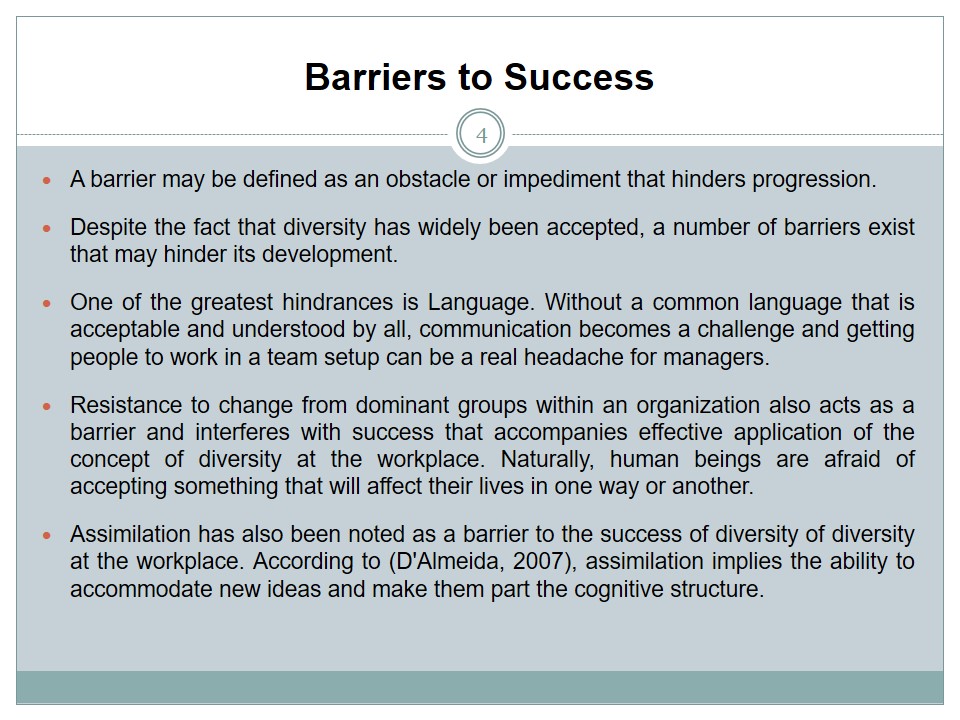
Overcoming Diversity Barriers
As noted by Thiederman (2008), diversity does not just happen. It takes strong leadership to ensure that diversity works in any organization. Apparently, managing diversity effectively implies hiring employees from different backgrounds, working with vendors from a varied background, and showing respect to all.
As a starting point, it is imperative for organizations to have a clear plan of how is to incorporate diversity within its culture.
In the United States, diversity at the workplace has been addressed from different quarters and especially educational institutions. By training its workforce on the importance of a diverse workforce, the United States has consistently ensured that employers are supplied with people who are ready to work with others from a diverse background.
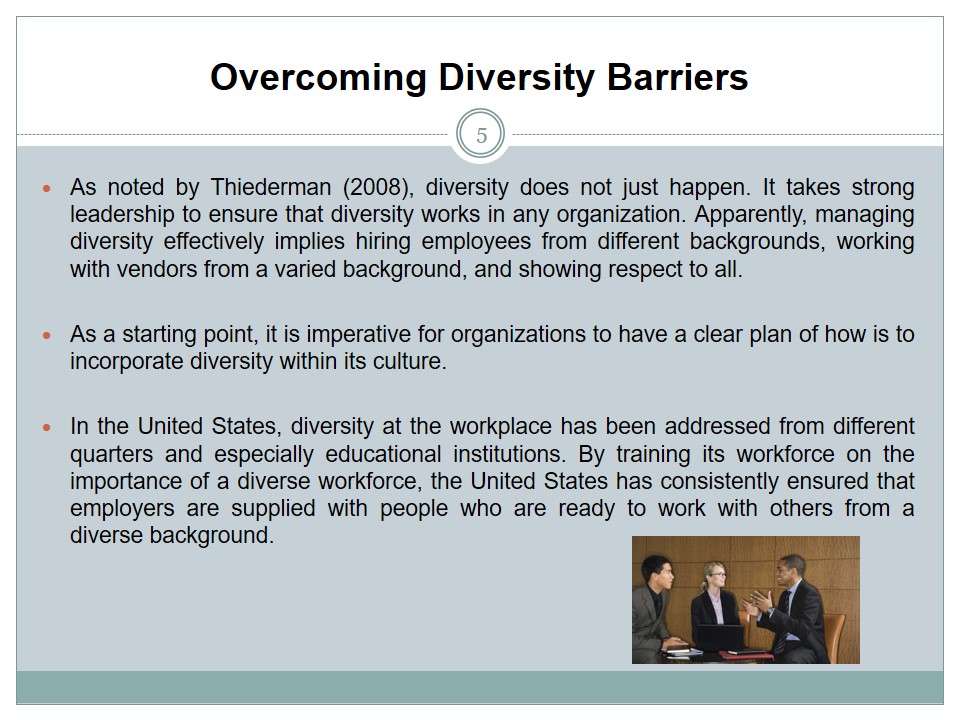
Barriers to Effective Communication
Dealing with a diverse workforce poses two major challenges to managers (Esty, 1995).
First, it is very critical for managers to learn how to handle interpersonal problems encountered on a daily basis as a result of employees using different languages, coming from various cultural backgrounds or holding different values.
Secondly, managers must have the ability to create an environment that can effectively support a diverse workforce. Without an enabling environment, diversity would create more confusion instead damage the reputation of an organization.
Pride and arrogance can also be a hindrance to effective communication in a diverse work setup. Ordinarily, people tend to take pride in their status in society. Unfortunately, this may work against the intent to communicate effectively especially if employees start feeling important because of ethnicity or social class and looking down on others.
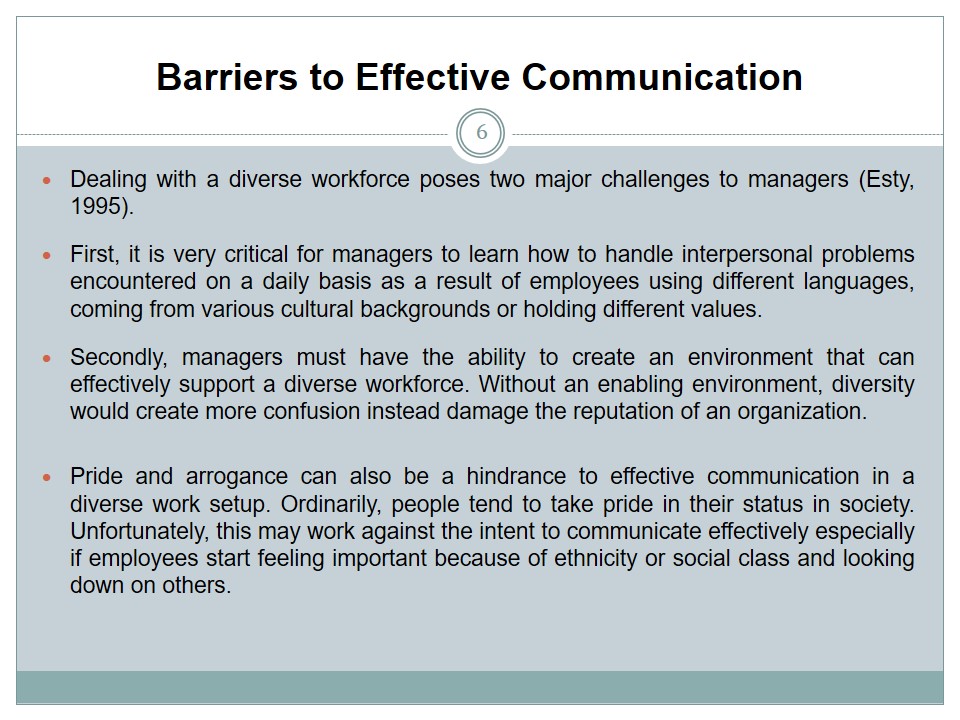
Overcoming Communication Barriers
Dealing with people’s behavior has been identified as one way of addressing the challenge of a diverse workforce.
It is imperative to give people ample time to reflect on the need for diversity. Leaders must make deliberate attempts to engage with employees at a much deeper level and to educate them on the critical aspects of working within a diverse work setup (Thiederman, 2008).
The attitude of employees toward working within a diverse work environment is another important consideration that must be addressed at all costs. Employees should be encouraged to carefully consider their individual views regarding working in a diverse environment and deal with any negative thoughts that can affect their performance.
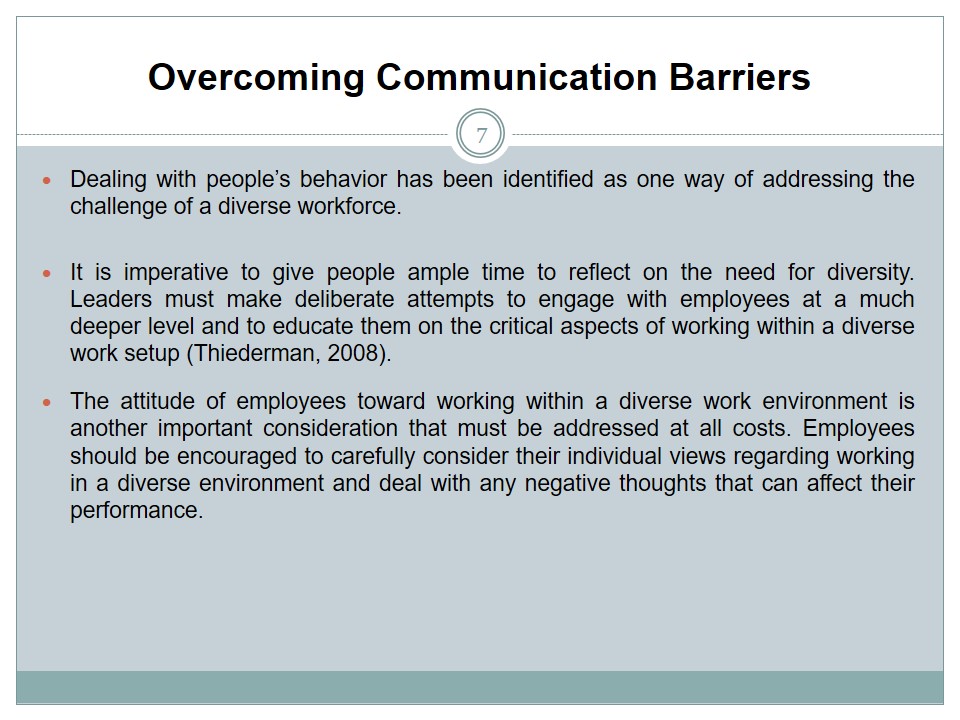
Summary
Considering that being biased can easily destroy an organization’s reputation, it is imperative for every single organization to avoid bias and fully embrace the concept of diversity.
Showing biasness and favoritism in any way is unprofessional and can turn out to be very costly in the end. Stakeholders and customers may, for example, avoid doing business with biased organizations and this could lead to loss of revenue.
Ostensibly, effective management of diversity at the workplace is vital if an organization is to reap the benefits of diversity. As has been explained, a diverse workgroup benefits an organization in a number of ways.
Barriers to diversity include language, assimilation, and resistance to change. To avoid disappointments, managers should spend time educating employees and to help them change attitude toward working in a diverse work environment.
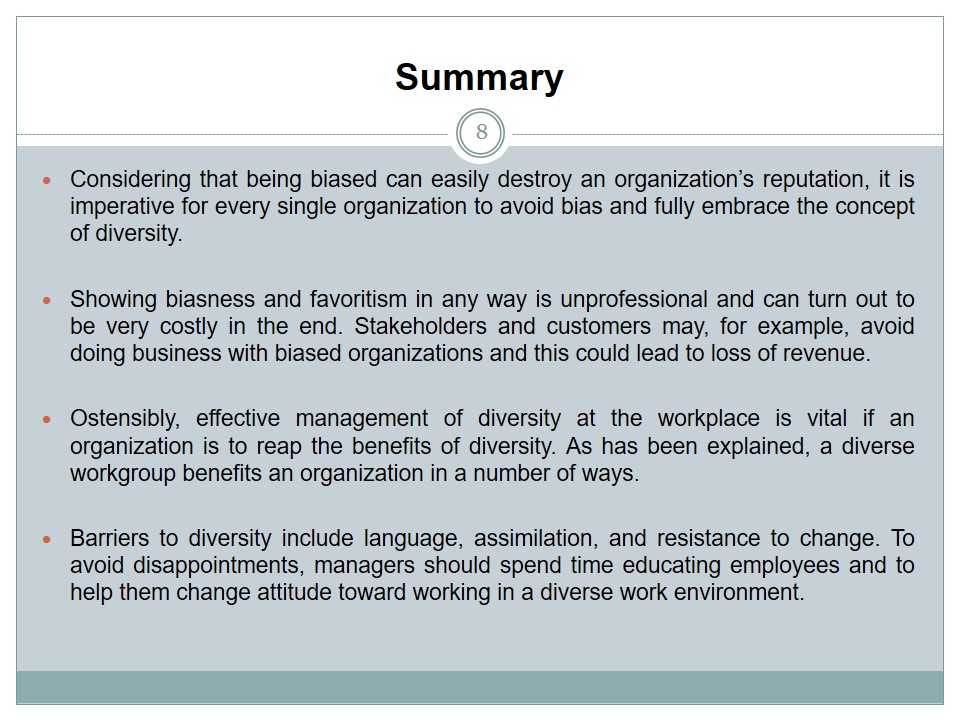
References
D’Almeida, C. M. (2007). The Effects of Cultural Diversity in the Workplace. Cambridge, UK: ProQuest.
Esty, K. C. (1995). Workplace Diversity. Avon, MA: Adams Media.
Gröschl, S. (2011). Diversity in the Workplace: Multi-disciplinary and International Perspectives. Burlington, VT: Gower Publishing, Ltd.
Shakhray, I. (2009). Managing Diversity in the Workplace. Norderstedt, Germany: GRIN Verlag.
Thiederman, S. (2008). Making Diversity Work: 7 Steps for Defeating Bias in the Workplace. New York, NY: Kaplan Publishing.